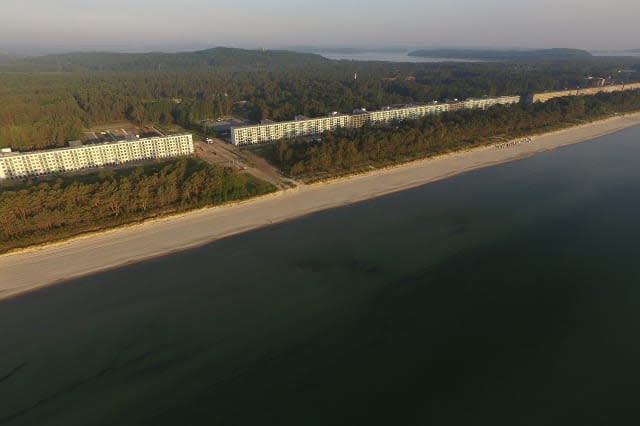See inside Hitler's huge holiday resort

A seaside holiday resort commissioned by Adolf Hitler is finally open for business, with flats on sale at more than £500,000.
The Prora resort on Germany's Rugan Island was built by Hitler between 1936 and 1939 as the world's largest holiday camp, stretching for three miles along the Baltic Sea.
See also: Has Adolf Hitler's address book been found?
See also: Hitler's underwear sells for more than £4k
Pitched as a gift to loyal workers under a programme called 'Strength through Joy', it was never completed, however, with construction abandoned on the outbreak of the Second World War.
The crumbling buildings remained untouched for decades, until the site was taken over by developers Prora Solitaire - who have now finished transforming it into a huge hotel and blocks of luxury apartments, available for sale and to rent.

Hitler's original plans were for eight gigantic blocks 450 metres long. Each unit was to be a single room measuring 16 by 8.2 feet, facing the sea, and including two beds, a sink and a dresser.
The centre of the resort was to be an enormous festival hall that could hold all 20,000 residents at the same time. There were also to be theatres, cinemas and two wave pools.
The new design follows the same basic layout, with a single line of buildings measuring 2.8 miles long. The resort, now owned by German real-estate company Metropole Marketing, includes the world's longest youth hostel, with 402 beds and 96 rooms, and also has a number of smart restaurants and a spa, as well as a museum.

Luxury apartments in the block have been put up for sale, with some going for more than £500,000. They have smart kitchens and glass balconies and are marketed mainly at middle-aged, wealthy people from Hamburg and Berlin as second homes.
As the site is considered as a historic property, there are tax breaks on the purchase, and most of the flats have already sold.




